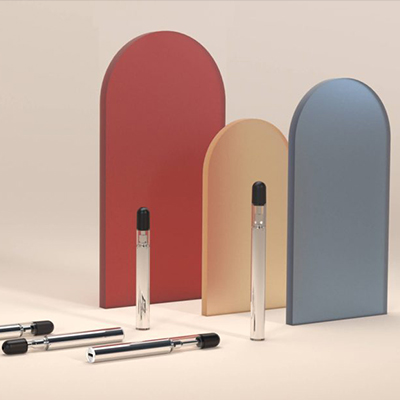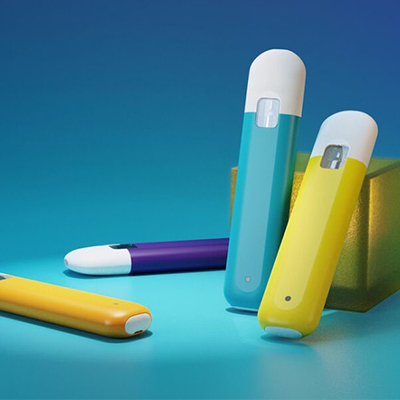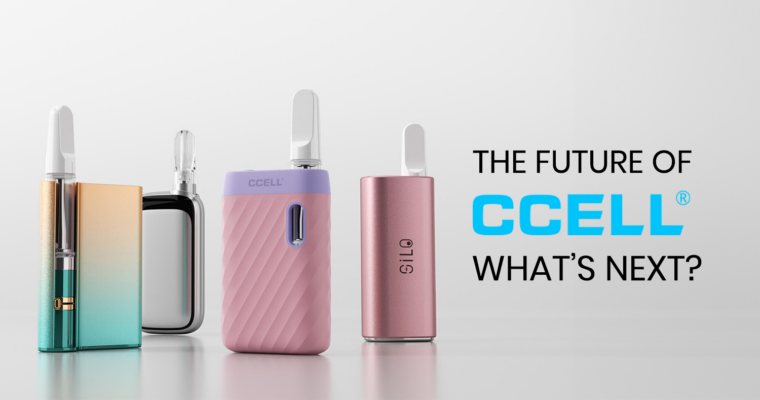Tetrahydrocannabihexol (THC-H) is one of the over 100 cannabinoids that naturally occur within the cannabis plant, and it differs from Delta-9 THC in that it has a longer side chain of carbon atoms. While Delta-9 has a side chain consisting of five carbon atoms, the side chain of the THC-H molecule has six carbon atoms – and that difference may make THC-H significantly more potent.
If you’re a cannabis aficionado, you’ve probably consumed THC-H already because it occurs naturally in the cannabis plant. Because THC-H is one of many minor cannabinoids, though, it isn’t really feasible to extract it directly from the plant. Instead, hemp processors obtain THC-H through a conversion process. Converting CBD to THC-H makes it possible to use THC-H in isolation, giving rise to a variety of products such as THC-H gummies and vape cartridges.
So, as you explore the wide world of cannabinoids, should you add THC-H to your list? If you do, what sort of effect can you expect from this cannabinoid – and what are the potential side effects? In this overview, we’ll provide some valuable information that can help you get started.
What Kind of Cannabinoid Is THC-H?
THC-H is a homolog of Delta-9 THC, which means that the main active components of the two molecules are identical. As mentioned above, the difference between THC vs. THC-H is that THC-H has a side chain consisting of six carbon molecules rather than five. THC-H is one of the many natural variations of the THC molecule, and it does occur in the cannabis plant – just not in a high enough concentration for you to separate its effects from those of Delta-9 THC. It’s only thanks to today’s cannabinoid conversion technologies that you are now able to consume THC-H on its own and compare its effects to those of other cannabinoids.
Delta-9 THC has multiple homologs that are available to purchase and use individually in products such as gummies and vape cartridges. Here’s a list of what they are and how they differ from one another.
- THC-V has a side chain consisting of three carbon atoms.
- THC-B has a side chain consisting of four carbon atoms.
- Delta-9 THC has a side chain consisting of five carbon atoms.
- THC-H has a side chain consisting of six carbon atoms.
- THC-P has a side chain consisting of seven carbon atoms.
- THC-JD has a side chain consisting of eight carbon atoms.
There hasn’t been a great deal of research examining the effects of THC-H and other THC homologs. All that we have at the present time are anecdotal reports from users, and people have reported that the THC homologs with longer side chains generally seem stronger than Delta-9 THC. People usually report that THC-H seems noticeably more potent than Delta-9 THC. In addition, vape cartridges are more potent than dry herbs anyway since they’re filled with highly concentrated distillates. With those two things in mind, it’s a good idea to start slowly when you try THC-H for the first time, because that’ll help you avoid any unwanted negative side effects.
How Is THC-H Made?
Because THC-H doesn’t occur in high enough concentrations in cannabis to make direct extraction practical, hemp processors obtain it in another way: by converting it from another cannabinoid. Industrial hemp is federally legal, and it’s widely grown across the United States for its CBD content. Since it’s relatively easy to extract and isolate CBD from industrial hemp, CBD is the starting point for THC-H and virtually all other novel cannabinoids.
- CBD isolation begins with the extraction of raw distillate from industrial hemp. The hemp buds are ground and loaded into a machine that uses carbon dioxide to break the cell walls of the plant material, releasing the essential oils.
- The hemp essential oil is filtered and distilled to isolate the CBD from the other cannabinoids. The refined distillate is then combined with a solvent that causes the CBD to crystalize. CBD isolate is over 99-percent pure, making it the perfect candidate to convert to other cannabinoids.
- The CBD isolate is dissolved into a liquid solvent and combined with a catalyst that triggers isomerization, reorganizing the CBD molecules and converting them into THC-H molecules.
- The residual solvents and catalysts are removed from the finished solution, which is then sent to a third-party laboratory to confirm that the products created from the THC-H solution will be potent and safe to use.
What Are the Effects of THC-H?

Although no scientific research has been conducted to confirm the effects and risks of THC-H, early reports from users suggest that the effects of THC-H are similar to those of Delta-9 THC but seem to be noticeably stronger. Some of the commonly reported effects include improved sleep, pain relief, relaxation, euphoria, happiness and increased openness to social situations.
It’s important to remember, though, that these possible effects of THC-H are based on anecdotal reports from users and the assumption that the effects should generally be similar to those of Delta-9 THC due to the similar molecular structure. Your response to a particular cannabinoid might be different from what other users have reported, which is why it’s important to start slowly and increase your dosage only after you’ve become familiar with the effects of THC-H.
What Are the Possible Side Effects of THC-H?
The molecular structure of THC-H is similar to that of Delta-9 THC. It stands to reason, then, that if the positive effects of the two cannabinoids are similar, the side effects of overconsumption are likely to be similar as well. Some of the most commonly reported negative side effects resulting from too much THC use include anxiety, paranoia, elevated heart rate, red eyes, dry mouth and nausea.
Because you definitely want to avoid any negative side effects when using THC-H, it’s important for us to note once again that you should start extremely slowly when using THC-H for the first time. THC-H may be more potent than Delta-9 THC because of its longer side chain – and if your primary experiences with cannabinoids involve smoking or vaping dry herbs, you’re doubly likely to find THC-H stronger because cannabis only contains about 15 percent THC on average. Distillates of THC-H and other novel cannabinoids, on the other hand, are typically around 85 percent pure.
We recommend starting with just a few puffs and allowing plenty of time for the effects to peak in your system. At that point, you can decide whether to use more or not.
THC-H FAQs
We hope that you’ve enjoyed reading this THC-H guide and that you’ve found the information useful. If you still have questions, though, never fear because you’ll probably find the answers below. In this section of our guide, we’ll answer the most commonly asked questions about THC-H.
What Is THC-H?
THC-H is a naturally occurring cannabinoid that has a molecular structure similar to that of Delta-9 THC. The THC-H molecule has a side chain consisting of six carbon atoms rather than five, though, which could make THC-H more potent than Delta-9.
Does THC-H Get You High?
THC-H does have psychoactive effects, with users generally reporting that the effects are a bit more potent than those experienced after consuming Delta-9 THC.
How Long Does the THC-H High Last?
When you vape THC-H, you can generally expect the high to set in quickly, peaking in 20-30 minutes and fading after a few hours. With THC-H edibles, it may take up to two hours for the high to peak, but it’ll last for several hours after that.
Is THC-H Safe?
There have been no scientific studies examining the safety of THC-H. Because THC-H is naturally occurring, you most likely consume it already if you use cannabis. However, it’s unknown whether THC-H has a different safety profile from that of cannabis if it’s consumed in isolation.
Is THC-H Legal?
THC-H derived from industrial hemp is federally legal according to the 2018 Farm Bill as long as the product contains less than 0.3 percent Delta-9 THC. THC-H is also legal in most states but isn’t legal in states that have banned it or have banned all forms of THC.
What Is the Difference Between THC-O vs. THC-H?
THC-O is the acetate form of THC, and it doesn’t produce a high until after your body has metabolized it. THC-H is similar to Delta-9 THC except that it has a longer carbon side chain. Both THC-O and THC-H are thought to be more potent than Delta-9 THC.
Final Thoughts on THC-H
Of the many novel cannabinoids that have hit the market over the past couple of years, THC-H is surely one of the most interesting. THC-H doesn’t have the borderline-psychedelic potency of some other cannabinoids, but users typically agree that it seems to pack a bit of an extra punch compared to Delta-9 THC. In addition, the fact that THC-H is federally legal and not banned by most states means that it’s completely legal to buy in many places that don’t allow access to traditional cannabis. If you’re curious about the new crop of cannabinoids that are hitting the market these days, buying some THC-H vape cartridges seems like a great way to begin.
Don’t forget that if you want to take full advantage of the latest cannabinoid vaping products, you need a great vaping device. Shop our selection of oil pens and 510 vape batteries now.






